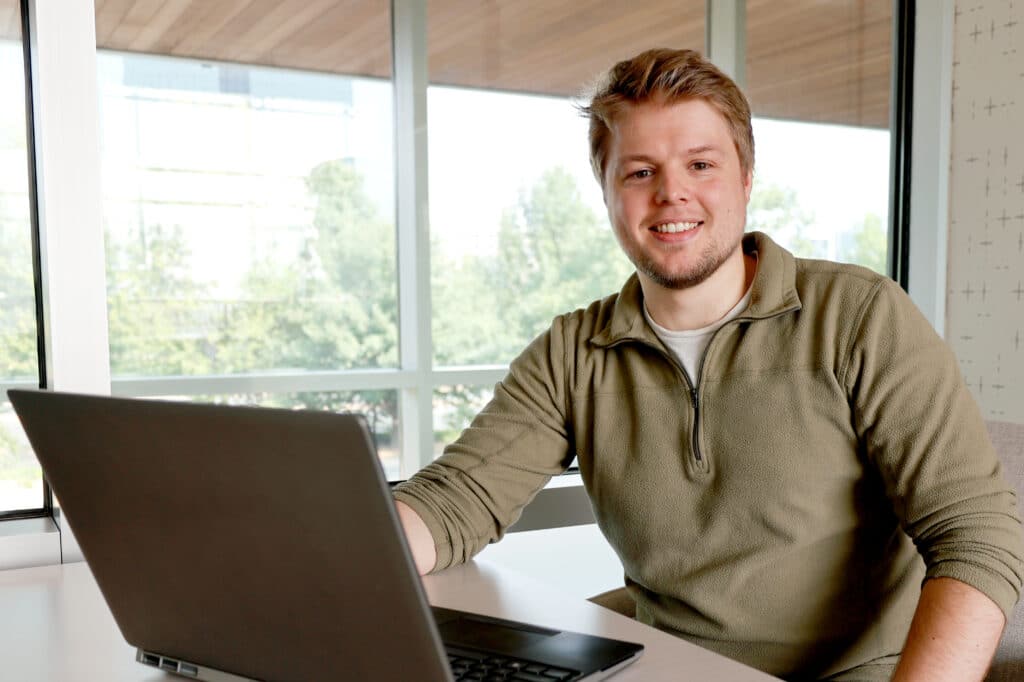Q&A: Ryan O’Gorman on Earning His PE

Ryan O’Gorman is a Mechanical Engineer in TKDA’s Facilities Engineering Division, where he focuses on designing HVAC, plumbing, and alternative energy systems for a wide mix of commercial, industrial, and institutional projects. He’s a creative problem solver passionate about sustainability, and he’s worked on everything from transportation hubs to university campuses and manufacturing facilities. Recently, Ryan hit a big milestone by earning his PE license in Minnesota—a reflection of both his technical skills and his drive to keep growing as an engineer.
What inspired you to become an engineer?
I have always liked problem solving, and I have other family members – my brother and several uncles – that are engineers. I wasn’t sure what type of engineer I wanted to be, but I knew from a young age that I wanted to be in the field. In college, I started off by getting a physics degree from Saint John’s University because it gave me the flexibility to explore different paths. Afterwards, at South Dakota State University (SDSU) I pursued civil engineering until I decided to go into mechanical engineering after realizing I liked the mechanical side of things, and it aligned better with how I think and what I enjoy. After I received my bachelor’s degree from SDSU, I went on to earn a Master of Science in Mechanical Engineering from the University of St. Thomas.
Are there any projects at TKDA that you’re especially proud of?
Since starting at TKDA, every project I’ve worked on has been so unique. There’s a couple that have been especially fun to explore different aspects of engineering and gain hands-on experience. A big project that I’m currently working on is a new Service Center in Saint Paul, Minnesota. This project is incredible – the mechanical systems are designed around a new geothermal technology that uses the aquifer below (which stays mostly at a constant temperature year-round) as a large heat sink and cooling source for the building. It’s different from the typical ground source system and transfers heat to and from the aquafer through a closed-source system. With this system, we are using the water mass within the aquifer instead of the ground to adjust the temperature. I’ve always been interested in sustainability and love that aspect of this project. As engineers, I believe we have a responsibility to push for more sustainable designs, and this project showcases how engineering can work in harmony with our natural resources.
What was the most challenging part of the PE licensure process?
The most challenging part was getting over the anxiety and stress of having to take this big test. I think it’s common for young engineers (myself included) to think they need to understand every single thing about engineering before they can take the test. It was tough for me to get over that mental hurdle to decide to commit to taking the test. After I got over that mental hurdle, I signed up for a PE exam prep course, which turned out to be incredibly helpful. The classes were well-structured, and I was able to take a lot of practice tests. Once I started diving into it, I realized the exam was going to be totally doable.
What advice would you give to other engineers working toward their PE license?
I recommend signing up for an exam prep class. I think they’re beneficial and the course I took was very helpful for me. A lot of the stuff that the class teaches covers the basics of the test and will give you confidence knowing you’ve covered all the right material. I think that a lot of people don’t know what exactly to study and aren’t even sure where to begin. In the prep class, they hone in all the areas of engineering that are relevant to the test. So instead of feeling like you have to know every single thing about engineering, you learn exactly what you need to do well. A lot of times the classes will give you supplemental materials which include a ton of practice tests, and I recommend taking as many practice tests as you can.
How has TKDA supported your growth as an engineer?
TKDA’s culture feels different than other firms. My coworkers at TKDA have been good about checking in about my understanding or asking me if I need anything explained further. They’ll take time out of their day and just talk to me to make sure I understand.
Another thing I appreciate about TKDA is how supportive our Mechanical Group Manager, Tim Hoseck, has been in encouraging our team’s professional growth. Whether it’s through classes, seminars, or getting new certifications, he has been really supportive of those efforts.
What excites you most about the future of engineering?
Seeing the push for more environmentally conscious designs excites me about the future of engineering. It’s really cool to see the industry as a whole push for sustainable engineering. I’ve been seeing a lot more clients who are interested in building something that won’t become depreciated in just five or ten years. Our clients have been increasingly interested in making investments in sustainable designs like the geothermal system I mentioned earlier. In addition to geothermal, I’ve worked on projects with LEED-level designs and renewables like solar energy. Projects like these aren’t just innovative, they are incredibly rewarding to be a part of.

